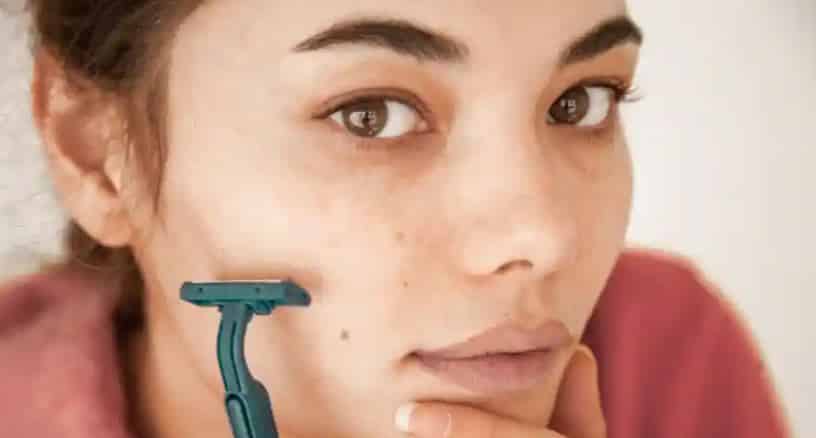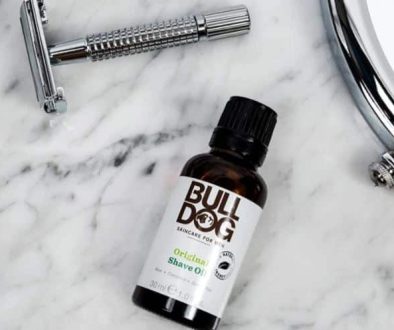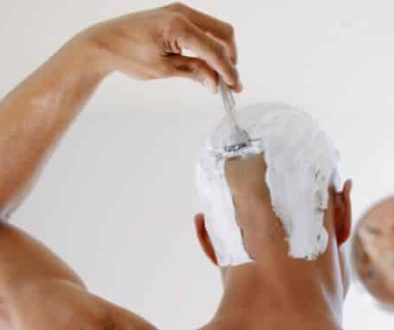Dermaplaning vs Shaving – Which Is Better?
What should you do if you have some facial hair but you can’t or don’t want to shave? That’s where dermaplaning comes in. In this article, we will be looking at dermaplaning vs shaving.
Dermaplaning and shaving are very different treatments. Dermaplaning is an expert esthetician technique that involves exfoliating your epidermis, as well as removing peach fuzz, with a sharp surgical blade. Shaving the face removes the vellus hair, commonly referred to as “peach fuzz”. In other words, shaving is simply using a razor to remove hair.
Dermaplaning vs Shaving Comparison Table
[table id=6 /]
What Is Dermaplaning?
Dermaplaning is a safe and simple cosmetic procedure performed to exfoliate the skin, remove the top dead layers of your skin cells, and remove vellus hair from your skin.
This procedure, however, requires some reasonable level of specialty of a Dermaplaning specialist, but you can also perform it yourself with great keenness.
Dermaplaning Tools
The dermatologist uses a sterile medical scalpel to remove vellus hair and dead skin cells during the process.
The sterile blade should be placed at a 45-degrees angle and then slowly dragged on the surface, imitating a person doing regular shaving. This, in turn, will remove all vellus hair. You do not need any shaving gel or cream to dermaplane.
How Long Do Dermaplaning Results Last?
It is very clear that just like shaving, dermaplaning results are not permanent. By clearing away up to three weeks’ worth of dead cells and removing the vellus hair, you should expect the hair to grow back and dead cells to accumulate back in just about three to four weeks.
Dermaplaning, therefore, lasts about one month only and you should be ready to repeat the procedure when the hair grows back.
Dermaplaning Stubble
As we already mentioned, the hair starts to grow back in a month’s time after dermaplaning. However, you will feel a little stubble as the hair starts to grow. This is common and it does not imply that the hair is more coarse or thicker.
Dermaplaning Regret
During the Dermaplaning procedure, you should not feel any pain in the area being worked on; instead, you will feel some tingling. There could be a little pain, though.
After this procedure is performed, you may experience some redness on the skin. Also, you may experience some infection or even scarring, but on rare occasions.
Dermaplaning costs between $150 to $250 on average. However, if you are a big fan of DIY or don’t have enough money to seek professional services, you can perform the procedure at home. Be very careful, though, since if the process is not carried out correctly you may end up with some regret as injuries may lead to infection or scarring.
Dermaplaning Pros And Cons
Pros
- Reducing the appearance of lines of weakness and wrinkles. One thing that occurs during this procedure is shaving off dead skin cells. Once this is done, the skin surface remains smooth, making it possible for pockmarks and wrinkles to disappear.
- Dermaplaning helps in clearing out dead cells from the skin. These dead cells often are what lead to acne. Through the Dermaplaning procedure, the pores are cleaned hence reducing spots and blackheads.
- The dermaplaning procedure leaves your skin smooth and radiant without any need for recovery. Once it is done, you can only need a moisturizer and the rest of the day moves on as planned. The procedure itself always takes at least thirty minutes hence saving time.
Cons
- Dermaplaning is more expensive than other hair removal treatments
- Since the hair is not removed from the root, the results may not last long
- Results depend on an individual’s hair-growth cycle
Who Should Not Dermaplane?
The procedure is generally safe for everyone. You should however avoid dermaplaning if you have active acne, an inflammatory skin condition, a tan, or experience a flaring rosacea breakout, or even a sunburn.
What Are The Benefits of Dermaplaning
Dermaplaning, like shaving, is about enhancing your appearance. If you have hair anywhere on your face including your upper lip, chin or anywhere else, dermaplaning is a good way to bring your face back to its smooth look. Here are the benefits of dermaplaning:
- A smooth, clean face
- A smooth complexion (Dermaplaning causes increased cell turnover)
- Facial exfoliation
Does Dermaplaning Make Your Hair Darker and Thicker?
Many women are afraid that removing hair will lead to darker and thicker hair growing back. While manual shaving can sometimes cause these issues, dermaplaning has a much lower risk of this happening.
Indeed, some of your hair will re-grow with the same texture and at the same rate as before you shaved. However, be wary of razor burns and ingrown hairs.
The Dermaplaning Process
The fact is women also have hair that grows on their faces, and they desire to remove it. However, this practice has gained popularity steadily thanks to celebrities such as Elizabeth Taylor, who publicly declared to remove such hair.
Dermaplaning is a safe and simple cosmetic procedure performed to exfoliate the skin, remove the top dead layers of your skin cells, and remove vellus hair from your skin.
This procedure, however, requires some reasonable level of specialty of a Dermaplaning specialist, but you can also perform it yourself with great keenness.
The dermatologist uses a sterile medical scalpel to remove vellus hair and dead skin cells during the process. The sterile blade should be placed at a 45-degrees angle then slowly dragged on the surface, imitating a person doing regular shaving. This, in turn, will remove all vellus hair. You do not need any shaving gel or cream to perform this operation.
The main point of doing this procedure is the removal of vellus hair and dead skin cells. This allows you to have a smooth, young, and radiant skin surface that is attractive and easy to apply make-up.
During the Dermaplaning procedure, you should not feel any pain in the area being worked on; instead, you will feel some tingling. There could be a little pain, though, and to avoid tingling; some dermatologists prefer to use sedatives to numb the skin area being worked on.
After this procedure is performed, you may experience some redness on the skin. This should not worry you, though, as it is simply a side-effect of the process. Also, you may experience some infection or even scarring, but on rare occasions. This procedure is always safe with no downtime for recovery.
Dermaplaning costs between $150 to $250 on average. However, if you are a big fan of DIY or don’t have enough money to seek professional services, you can perform the procedure at home. Be very careful, though, since if the process is not carried out correctly you may end up with an injury leading to infection or scarring.
What Is Shaving?
Often done by men, shaving is defined as using a shaving blade to trim the tip of the hair shaft to the skin level. This procedure uses a blade or razor, which is either an electric or standard razor.

One great advantage of this procedure is that you can easily perform it alone in the morning, especially if you are shaving your face. However, shaving the head can sometimes require a barber who can do it better.
The two broad types of shaving are wet shaving and dry shaving. Wet shaving involves water, some form of soap or cream, and standard razors, while dry shaving is waterless or creamless and uses electric razors.
After Shaving
You will need a shaving gel or shaving cream to maintain your skin’s moisture content as natural oil is removed in this process. The gel or cream also helps avoid dry skin and razor burns after shaving.
Is Shaving Painful?
During shaving, the blade is always set at a 35 degrees angle, with the shaving blade, moved 1 – 3 times to remove the hair shaft. This process is pain-free.
Shaving helps reduce the hair shaft up to the level of the skin. It also removes the excess oil on your face.
Shaving can be done easily at home, and it does not consume time. After you finish shaving, you need a post-shaving balm or splash to nourish your skin.
Shaving Pros And Cons
Pros
Shaving has got numerous benefits aside from good grooming. Some of them include:
- Shaving is pretty easy to perform by almost everyone. The process is quite simple, and the chances of an accident are minimal.
- Shaving requires tools that are readily available and thus reasonably inexpensive.
Cons
- Dull blades can cause cuts and irritation. Check out our article on why men frequently cut themselves shaving
- Shaving can cause itching, razor burn, inflamed hair follicle, and ingrown hairs.
- Results only last 1 to 3 days
Dermaplaning Vs Eyebrow Razor
You can easily remove peach fuzz or vellus hair by simply shaving the face. That means you can use an eyebrow razor to exfoliate easily at home.
However, there are more risks of damaging your skin’s moisture barrier majorly leading to inflammation, redness, or dryness.
On the other hand, while professional dermaplaning helps you remove vellus hair, it has more exfoliation benefits that you may not achieve by simply shaving with an eyebrow razor.
Dermaplaning Vs. Shaving, Which Is Better?
A great advantage of Dermaplaning is that it provides anti-aging properties. The professional shave of the dead skin cells reduces acne while leaving you with revitalized skin that makes you more youthful.
If you have not tried Dermaplaning you need to try it out today. However, depending on what you desire your face to look like, always go for the right choice.
Dermaplaning is the way to go if you desire a youthful face, but if you just want to get rid of the thick facial hair, you can shave them off.
Will Dermaplaning Cause More Hair to Grow?
No, dermaplaning doesn’t cause more hair to grow because its main objective is to remove the unsightly fine layer of hair. It doesn’t trigger thicker or darker hair regrowth.
Is Dermaplaning Safe?
Absolutely! Dermaplaning is safe for most people because it tends to have fewer side effects. However, you need to ensure you’re doing it right to avoid any complications later on.
Can I Shave Myself Instead of Dermaplaning?
Shaving only without dermaplaning won’t bring you the same results as you would if you use a proper dermaplaning tool.
You won’t get the nearly amount of dead skin and peach fuzz removed, as you would with a special dermaplaning treatment.
Therefore, this solely depends on your needs and whether one would meet your expectations more than the other.



